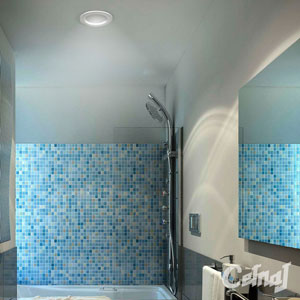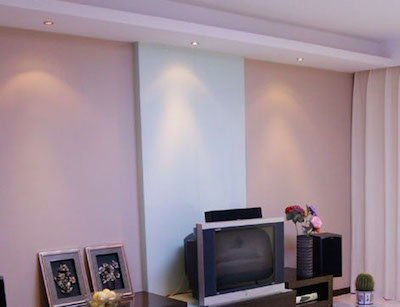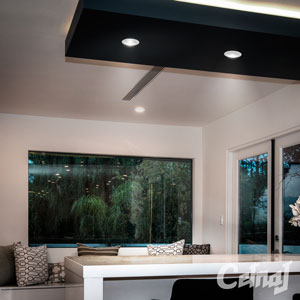How to use LED downlights in your home

It’s pretty universally known that downlights are a staple of any lighting scheme in a home. If you’ve been turned off by downlights before, it would most likely be the way they were used in the space - when utilised to the best of their ability, downlights can be the subtle but essential lighting piece that ties your space together.
Here are some tips as to how to use LED downlights in your home in a way that highlights their usefulness as well as puts them to work in the right places. How you use downlights depends on the function of the room, what other lighting is the room, and how much light those downlights put out. We’ll drill down further below - keep reading!
The recessed nature of downlights allows for a modern, sleek, low-profile look. Downlights don’t create clutter or take up space the way other lights do - for example, a lamp takes up space on a table or the floor, and using a pendant means you can only really use the space under it for a fixed piece of furniture. LED downlights are the optimum for space-saving, energy-saving, low-maintenance lighting.
It almost goes without saying that choosing energy efficient downlights is the best course of action - LEDs being the best for energy-use and lifetime: get more info in our LED blog. A 10 watt LED downlight is about the norm and will produce roughly 800 lumens of light output. You can get more or fewer lumens as the wattages go up and down. Other types of downlights to LEDs will use a higher wattage and therefore more power to output the same number of lumens. To get a good handle on wattage conversions and an explanation on lumens, check out our blog here.

Downlights need to be thoughtfully and strategically placed in a space so they create the look and feel you are going for rather than just littering them across the ceiling. Placing them at stock standard measurements all across the ceiling of a room can sometimes work, but more often than not it comes across too rigid and grid-like. Another point to remember is to make sure the light your downlights cast is not interfered with by a ceiling fan - keep them out of the diameter of the fan blades so you don’t create a flickering, choppy effect when the fan is on.
In a large space, it can be tempting to use downlights all across the ceiling, but using them to the best of their ability would be to layer the lighting so you have downlights serving a special purpose as ambient lighting at the edges of a room, task lighting in special places like the kitchen or bathroom, or using them as accent lighting to show off features or artworks. Layering the lighting with lamps, pendants, batten fix lights, and even more creates a more interesting lighting scheme for your space where every piece of lighting plays its specific role and the space never feels underlit or overlit.
One way to use downlights is as accent lighting at the edges of a room to highlight features or artworks on the walls. This works well in spaces like hallways or entryways where not too much light is needed as tasks aren’t generally carried out here, nor is it a space that people gather. By creating light splashes on the walls where art may be situated, the space is lit without being too harsh or directionless. This strategy can also work ell in bigger spaces like a living room, or open plan living and dining area. In this kind of space, you can use downlights to feature artworks etc. in the same manner, while using other lighting such as a pendant in the middle of the room, or lamps placed in useful areas by the couch etc. for lighting that particular section of the room.
Using downlights to light mirrors in the bedroom or bathroom works well - placed above the mirror in a way that doesn’t cast a shadow over the mirror, but lights the person’s face so they can shave, apply make up, etc. Another good place is in the kitchen where task lighting is needed. Place downlights under cabinets or over open benches to illuminate the place where most of the food prep and task work is done - putting these task lights on a separate switch works well so that if you’re just popping into the kitchen for a quick snack or cuppa, you don’t have to turn on all the lights.
Whatever space you have, you can light it well if you layer the lighting to be cohesive throughout the room and the whole house. Using LED downlights as accent lighting, task lighting, and some ambient lighting utilises the sleek and unobtrusive nature of downlights so they work with your space, not against it.



